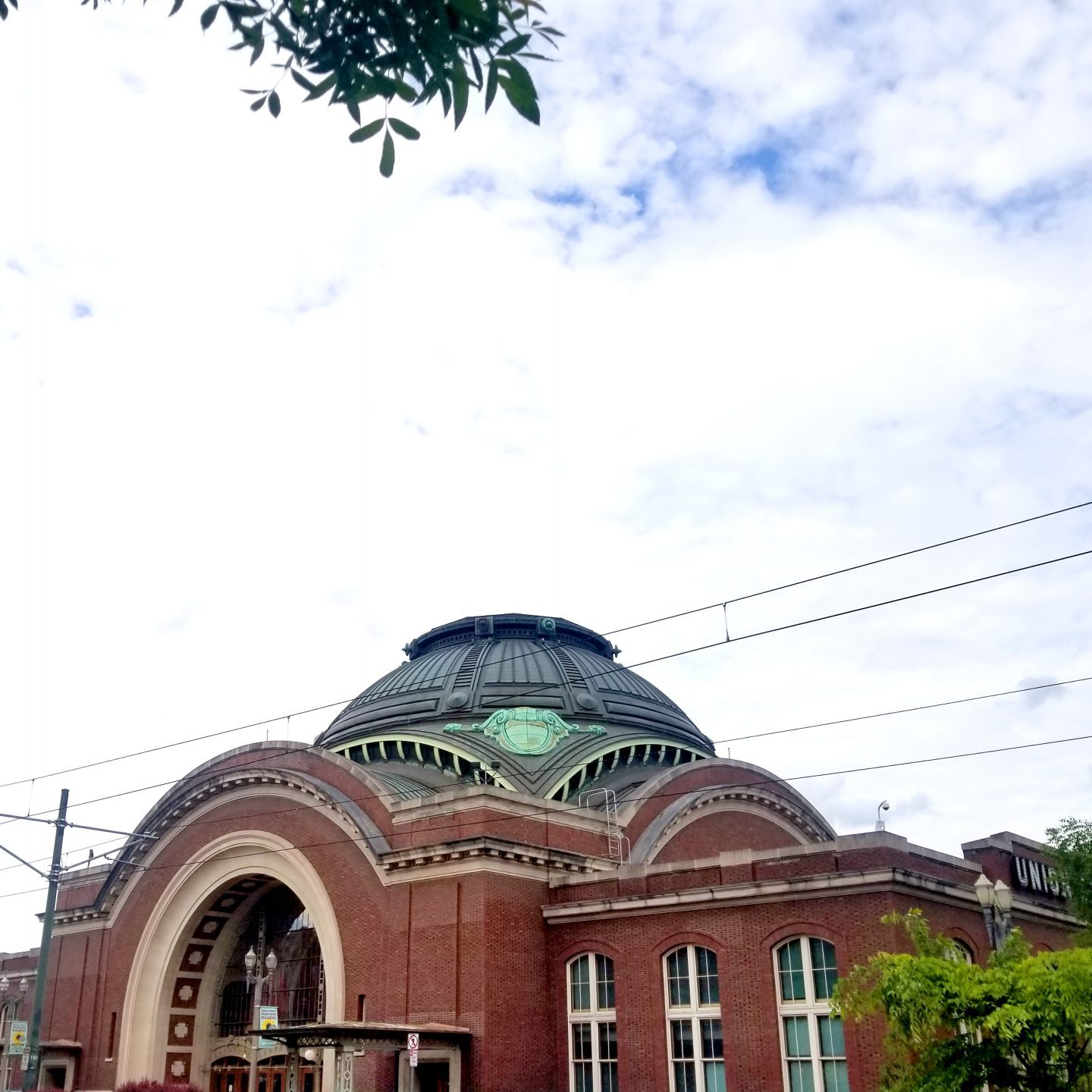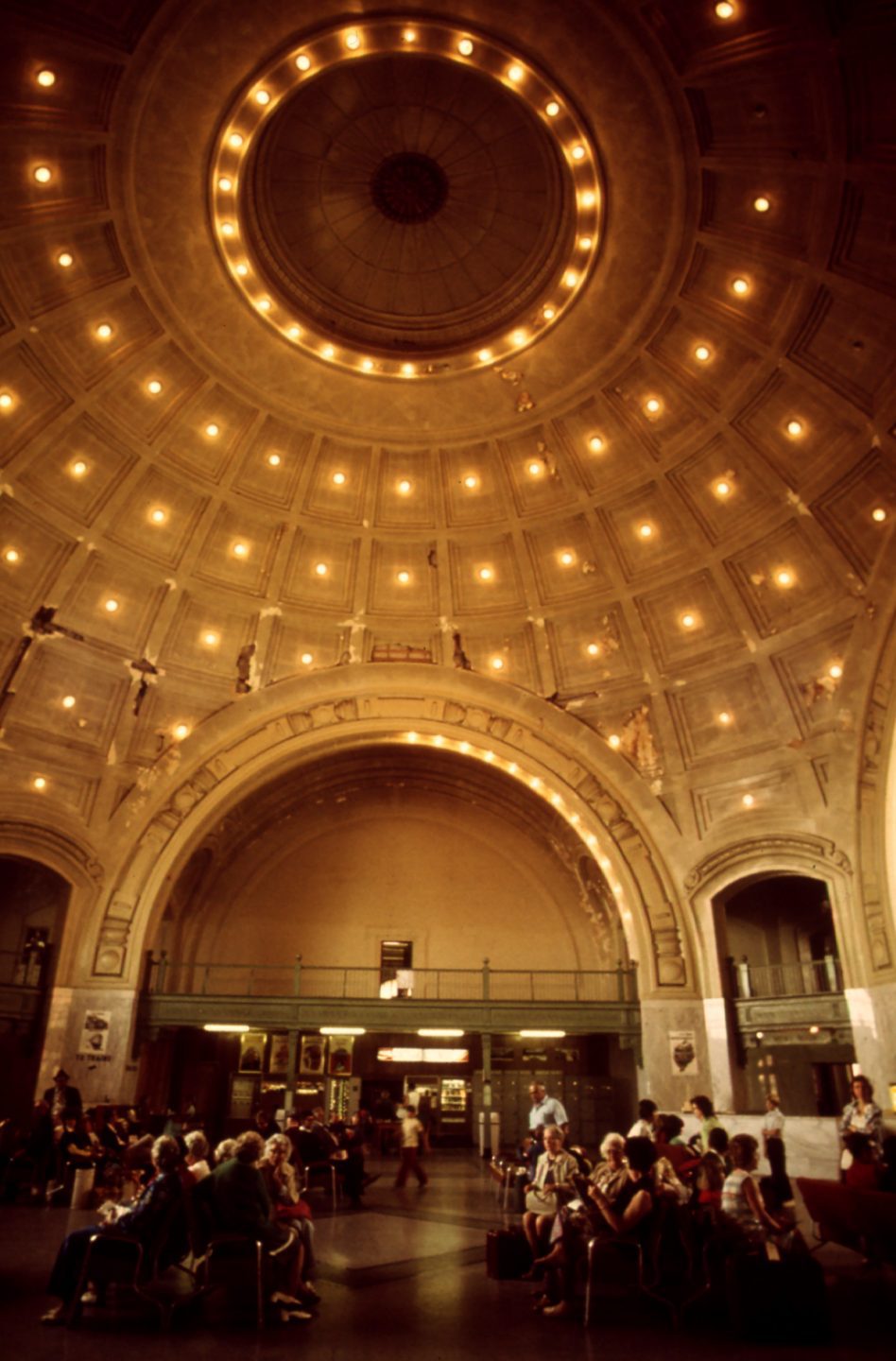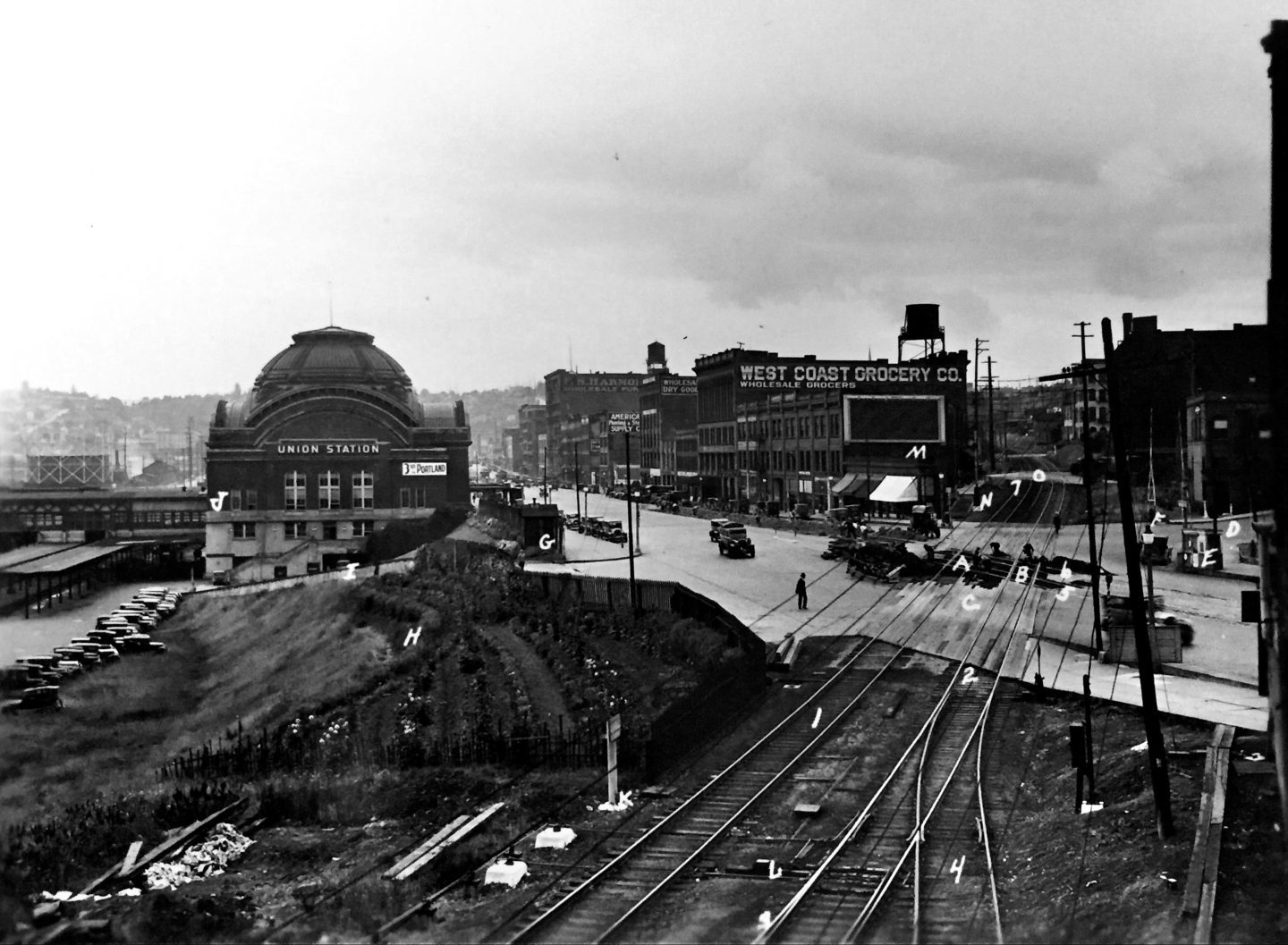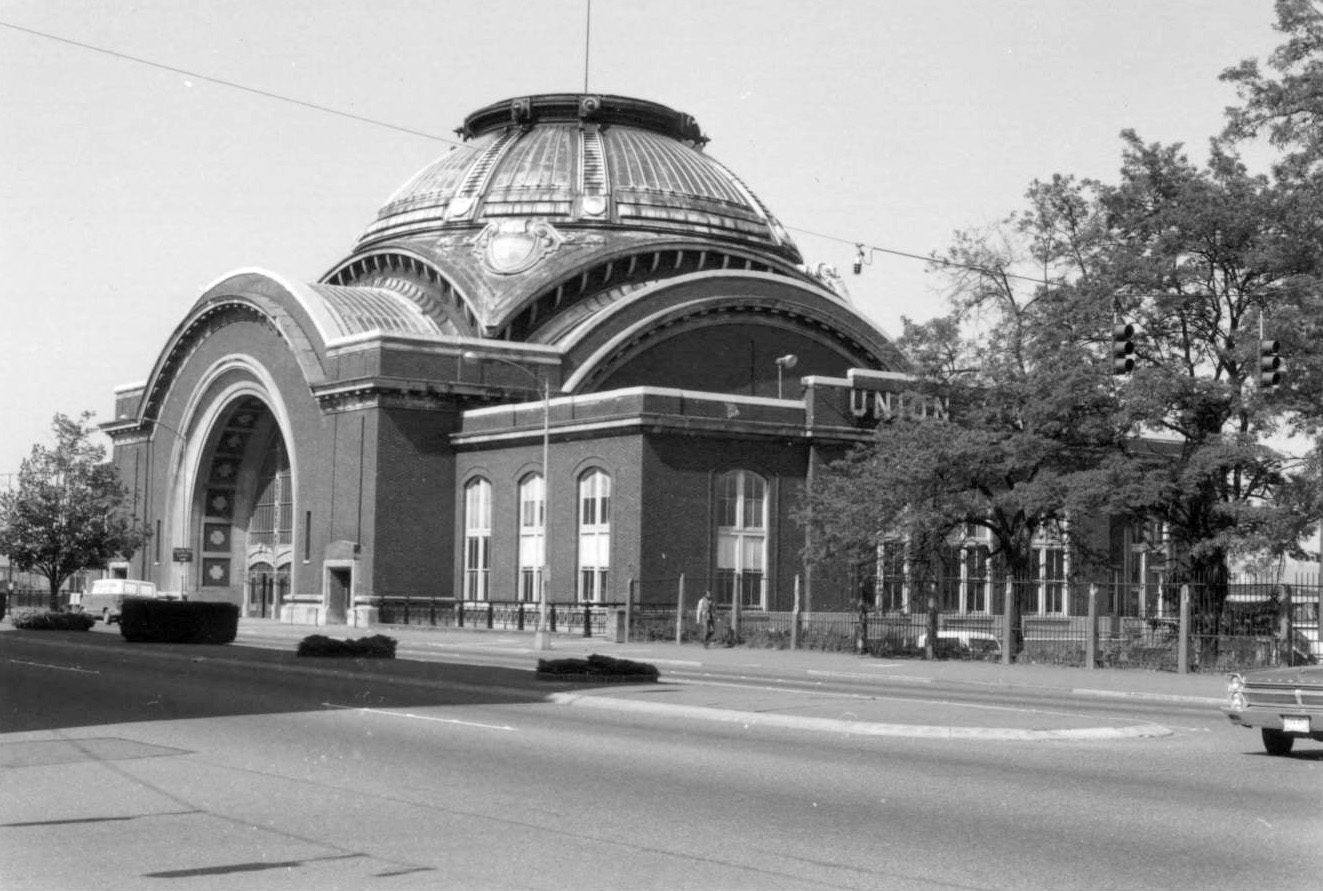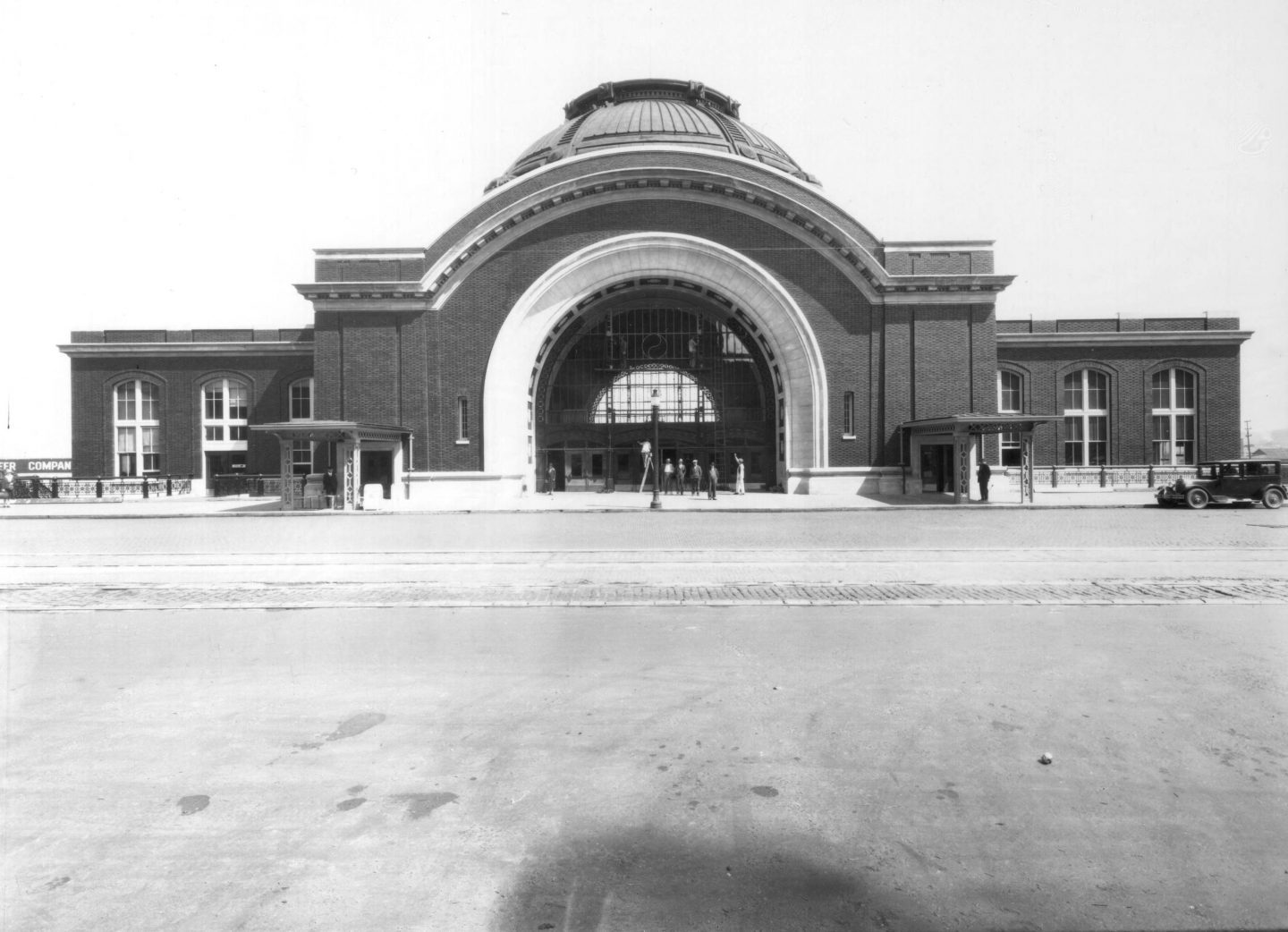-
Union Station
1717 Pacific Avenue
Architecturally, Union Station is the unmistakable centerpiece of the district. Union Station was completed in 1911 in a French renaissance style most often described as Beaux Arts. The architects, Reed and Stem, were from St. Paul, Minnesota, and were perhaps the foremost railroad architects in the United States in the early twentieth century. The firm is responsible for countless passenger depots, particularly along the Northern Pacific and Great Northern lines from the Midwest to the Pacific Northwest. In 1911 alone, the firm had 61 railroad stations under construction, including Grand Central Station in New York, Union Station in Detroit, and at the far terminus of the northern transcontinentals, Tacoma’s Union Station.
The building’s signature copper dome is a particularly rich embellishment atop the strict symmetry of the classical building. In the correct stylistic manner, Union Station exhibits the fundamental design ideas of a neoclassical structure or column — a strong base (in concrete), a central block (or more than a million bricks), and an ornate capital or cornice (in this case the vaults and dome). The central body of the building is flanked by two symmetrical wings, which widen the façade along Pacific Avenue and help disguise the classical column influence.
Inside, the station is dominated by the main rotunda which, for three quarters of a century, served as a stage for personalities, events, and the commonplace dramas of people’s lives. Through the rotunda at Union Station, immigrants from the East saw the saltwater of the Pacific for the first time, soldiers said their good-byes on the way to war, and aging pioneers bought passage in the 1950s to recall the age of steam locomotives one last time. Presidents and kings, movie stars and gangsters, salesmen and sailors, heroes and thieves – all came and went through the doors on Pacific and down the concourse to the tracks at Union Station.
Union Station is younger than most of the warehouse buildings in the district and is the third passenger depot built in the area. When the original drawings were done for the building in 1909, it was intended for the sole use of the Northern Pacific Railroad, but by the time construction was scheduled to begin, the Great Northern and the Union Pacific lines were coming into the city. The three railroads became partners in the building and its name was changed to Union Station.
Today, Union Station sits between two major urban-development projects. To the north, the Federal Courthouse is linked to the historic building across the east façade. Courtrooms and federal offices occupy much of the non-public portions of the building. On the south side, the Washington State Historical Society Museum was completed in 1996. Project architect Charles Moore was also responsible for the master plan for the branch campus of the University of Washington, which occupies much of the district and many of the historic warehouses.
